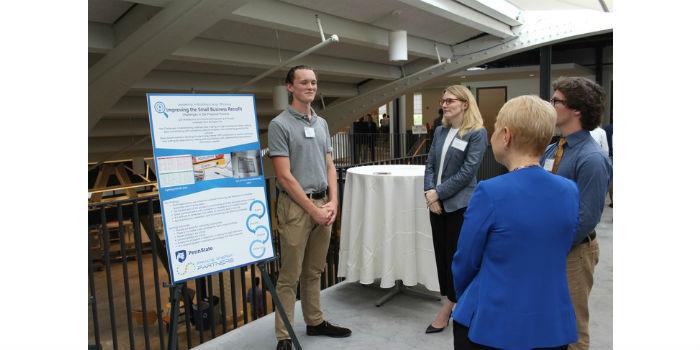 United States. Danfoss and Pennsylvania State University in Philadelphia recently convened a workshop on the campus of the Penn State College of Engineering at The Navy Yard in Philadelphia to examine the results of a joint research and education initiative. Last year, Danfoss provided a grant to support the University's 13-week Immersive Practice in Global Sustainability Practices and launched the Cities for the Future Engineering collaborative initiative to increase the global workforce needed to support a sustainable, low-carbon community environment around the world. The workshop marked the culmination of the internship program and the Engineering Tomorrow's Cities initiative.
United States. Danfoss and Pennsylvania State University in Philadelphia recently convened a workshop on the campus of the Penn State College of Engineering at The Navy Yard in Philadelphia to examine the results of a joint research and education initiative. Last year, Danfoss provided a grant to support the University's 13-week Immersive Practice in Global Sustainability Practices and launched the Cities for the Future Engineering collaborative initiative to increase the global workforce needed to support a sustainable, low-carbon community environment around the world. The workshop marked the culmination of the internship program and the Engineering Tomorrow's Cities initiative.
The project was part of Danfoss-Penn State's effort to support the United Nations Economic Commission for Europe (UNECE) Guidelines on Energy Performance Standards in Buildings, a global initiative to foster a post-carbon economy and meet development goals. and which was based on the research and energy facility of Penn State's Living Laboratory. It was conducted under the direction of Dr. James Freihaut, professor of architectural engineering and technical director of the facility, and Dr. David Riley, director of the University's GridSTAR Center and professor of architectural engineering.
The focus of the Engineering Tomorrow's Cities initiative was the deployment of innovative technologies and designs to reduce carbon emissions and highlight the important role of engineering in creating sustainable commercial buildings and communities of tomorrow. Forty interns from 11 countries participated in the program, with research topics ranging from emission prediction to microgrid operations, energy storage for building automation and the Internet of Things as an enabling platform, construction of controls for measurement and construction of external integration conditions.
During the workshop, graduate and undergraduate students reported not only on their specific research, but also on the spirit that enriched the program: students volunteered for long hours on their university and private sector assignments and continued projects long after the formal closure of the three-month initiative.
The discussion shed light on a broader generational shift in the field. "An oil crisis was impacting the world when I started my work decades ago," Dr. Freihaut observed. "The mission was to reduce energy dependence. Now the main concerns are the climate threat, emissions reduction and greater recognition of challenges such as indoor air quality, building-wide integration, integration of grid construction, waste energy and the like. Those concerns have transformed the research agenda and, as a result, we can now do much more with much less electrical power through innovation in building controls, variable speed technologies, and improvements in equipment design that were unimaginable when I started. Taking advantage of the Internet is just beginning. And twenty years from now our research priorities will seem remote."
Briefed on the initiative, Scott Foster, director of sustainable energy at Geneva-based UNECE, observed that "the students of the Danfoss-Penn State project will seed companies around the world with the knowledge and knowledge that a new global energy future requires." Foster leads the United Nations project, noting that the goal of a low-carbon global economy presents a major scientific and educational challenge. "Much of what we need to succeed is known or above the horizon. But we have to translate that knowledge from the lab to the field and to rapidly growing population centers around the world. The work penn State and Danfoss have begun working together is a model that needs to be rolled out around the world and scaled up to match the challenge."














